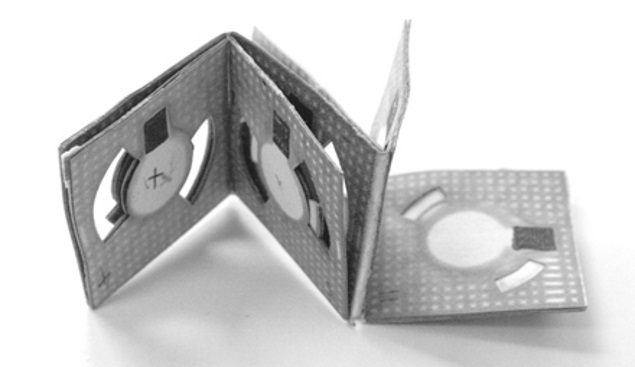- Home
- Science
- Science News
- New Low Cost Bacteria Powered Origami Battery Developed
New Low-Cost Bacteria-Powered Origami Battery Developed

Seokheun Choi from the State University of New York at Binghamton developed the battery which generates power from microbial respiration and costs just $0.05 (roughly Rs. 3.2) to build.
It delivers enough energy to run a paper-based biosensor with nothing more than a drop of bacteria-containing liquid.
"Dirty water has a lot of organic matter. Any type of organic material can be the source of bacteria for the bacterial metabolism," Choi said.
The new method should be especially useful to anyone working in remote areas with limited resources, Choi said.
Since paper is inexpensive and readily available, many experts working on disease control and prevention have seized upon it as a key material in creating diagnostic tools for the developing world.
However, paper-based biosensors must be paired with hand-held devices for analysis.
Choi said he envisions a self-powered system in which a paper-based battery would create enough energy to run the biosensor.
Creating such a system is the goal of a three-year grant of nearly $300,000 (roughly Rs. 1.8 crores) he has received from the National Science Foundation in the US.
The battery, which folds into a square the size of a matchbook, uses an inexpensive air-breathing cathode created with nickel sprayed onto one side of ordinary office paper.
The anode is screen printed with carbon paints, creating a hydrophilic zone with wax boundaries.
The research is published in the journal Nano Energy.
Catch the latest from the Consumer Electronics Show on Gadgets 360, at our CES 2026 hub.
Related Stories
- Samsung Galaxy Unpacked 2025
- ChatGPT
- Redmi Note 14 Pro+
- iPhone 16
- Apple Vision Pro
- Oneplus 12
- OnePlus Nord CE 3 Lite 5G
- iPhone 13
- Xiaomi 14 Pro
- Oppo Find N3
- Tecno Spark Go (2023)
- Realme V30
- Best Phones Under 25000
- Samsung Galaxy S24 Series
- Cryptocurrency
- iQoo 12
- Samsung Galaxy S24 Ultra
- Giottus
- Samsung Galaxy Z Flip 5
- Apple 'Scary Fast'
- Housefull 5
- GoPro Hero 12 Black Review
- Invincible Season 2
- JioGlass
- HD Ready TV
- Laptop Under 50000
- Smartwatch Under 10000
- Latest Mobile Phones
- Compare Phones
- Honor Win RT
- Honor Win
- Xiaomi 17 Ultra Leica Edition
- Xiaomi 17 Ultra
- Huawei Nova 15
- Huawei Nova 15 Pro
- Huawei Nova 15 Ultra
- OnePlus 15R
- Asus ProArt P16
- MacBook Pro 14-inch (M5, 2025)
- OPPO Pad Air 5
- Huawei MatePad 11.5 (2026)
- Xiaomi Watch 5
- Huawei Watch 10th Anniversary Edition
- Acerpure Nitro Z Series 100-inch QLED TV
- Samsung 43 Inch LED Ultra HD (4K) Smart TV (UA43UE81AFULXL)
- Asus ROG Ally
- Nintendo Switch Lite
- Haier 1.6 Ton 5 Star Inverter Split AC (HSU19G-MZAID5BN-INV)
- Haier 1.6 Ton 5 Star Inverter Split AC (HSU19G-MZAIM5BN-INV)

















